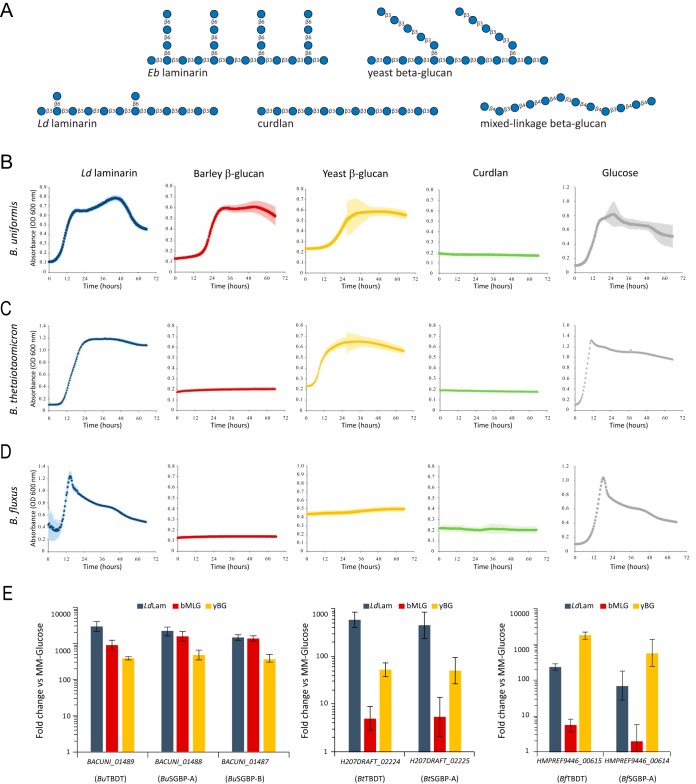FIG 2.
β(1,3)-Glucan utilization by Bacteroides. (A) Structures of β-glucans used in this study. Bacterial curdlan is a representative unbranched β(1,3)-glucan, analogous to plant callose. Algal laminarins are β(1,3)-glucans with β(1,6)-linked branches. Laminaria digitata laminarin has infrequent, single β(1,6)-glucosyl branches [β(1,3) to β(1,6) molar ratio, 7:1], while Eisenia bicyclis laminarin has a high frequency of branches with degrees of polymerization of up to three β(1,6)-glucosyl residues [β(1,3) to β(1,6) molar ratio, 3:2]. Yeast β(1,3)-glucan contains longer β(1,3)-glucan branches extended from β(1,6)-linked branch points. Cereal mixed-linkage β(1,3)/β(1,4)-glucans (MLGs) are linear chains of β(1,4)-linked cellotriosyl and cellotetraosyl units linked by β(1,3) bonds. (B to D) Growth curves of B. uniformis ATCC 8492 (B), B. thetaiotaomicron NLAE-zl-H207 (C), and B. fluxus YIT 12057 (D) in minimal medium containing the indicated carbon source at 0.5%, wt/vol. Points represent averages from n = 6 technical replicates (microplate wells) for polysaccharides and n = 3 for glucose; error bars represent the standard errors of the means. (E) RNA abundance for core PUL genes of Bacteroides spp. quantified by qRT-PCR. Bacteria were grown to mid-log phase in minimal medium containing glucose as the sole carbon source and subsequently exposed to different β-glucans (n = 3, expression measurements from individual cultures, relative to glucose control; error bars represent the standard errors of the means).

